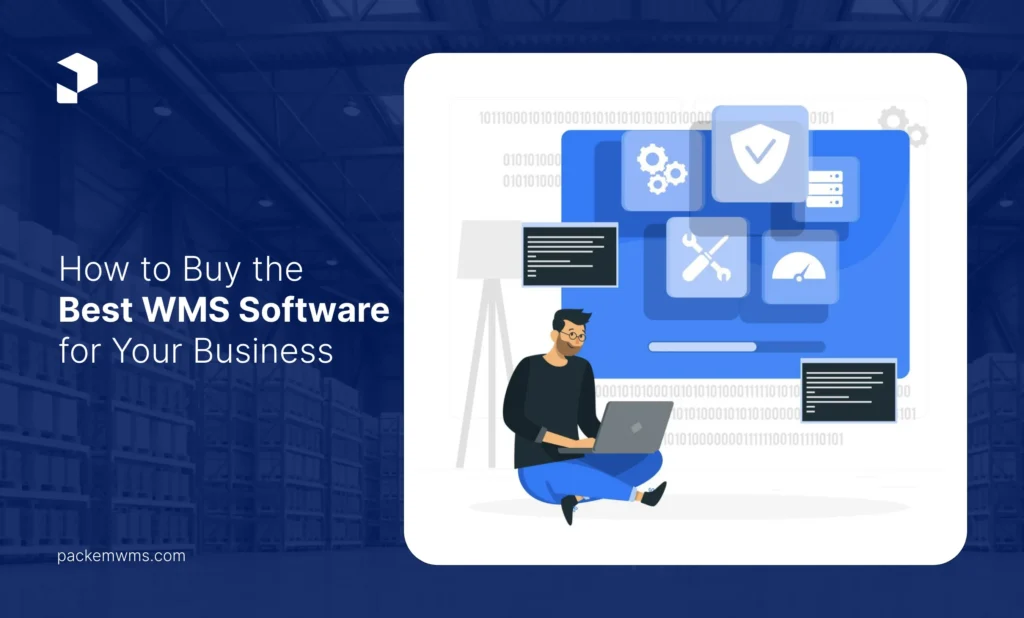A Warehouse Management System (WMS) would act as the very spine of the warehouse, paving the way for inventory management provisioning that is fast and at the same time its application would suit various operations being efficient without losing speed.
As you can see, the database is crammed with a lot of solutions that represent themselves as the ultimate WMS as a result it might be challenging to identify the best one.
This manual will specifically explain the key points to note in decision-making for the software to use and in the end, one is the best.
1. Understand Your Business Needs
With that in mind, be sure to evaluate your business requirements before looking at all the WMS options. Take a look at your own warehouse and the processes and workflows within it and determine what hurts your pain points and which areas need to improve.
Consider the following:
- Warehouse Size and Complexity: Assess the scale and intricacy of your warehouse operation.
- Inventory Turnover: Determine how frequently inventory moves in and out.
- Order Volume: Evaluate your average order volume and its seasonal fluctuations.
- Scalability: Ensure the WMS can scale with your business growth.
Knowing these allows you to codify the requirements into a WMS.
2. Key Features to Look For
As an expert in the field, when evaluating WMS software, I always advise assessing the following key features to ensure the program meets business requirements:
- Inventory Management: Efficiently track and control stock levels to avoid overstocking or stockouts.
- Order Management: Streamline picking, packing, and shipping processes to enhance accuracy and speed.
- Warehouse Optimization: Compute warehouse layout and storage tank arrangements to maximise usable space and efficiency of workflow.
- Real-Time Tracking: Monitor inventory levels, order status, and warehouse activities in real time.
- Reports and Analytics: Create rich reports and analytics to understand warehouse performance and help you take data-based actions.
Experience the simplest inventory management software.
Are you ready to transform how your business does inventory?
3. Evaluate Vendor Reputation
Thoroughly research WMS software vendors. Be sure to investigate a vendor’s reputation for reliability, customer service and overall support. The following steps are worth consideration:
- Customer Reviews: Read reviews and testimonials from other businesses to gauge customer satisfaction.
- Case Studies: Any vendor will have case studies showing their successes. Are specific projects similar to the challenge you’re trying to solve?
- Vendor Support: Is this company willing to train your staff, answer technical questions on the phone, and follow up with customer service?

4. Pricing and ROI Comparison
What should you consider while choosing a WMS? What would be the vendor’s pricing models? Such things as:
- The Initial Costs: These include service fees.
- Ongoing Expenses: This means monthly or yearly subscription charges, as well as support and maintenance costs.
- Estimating Returns on Investment (ROI): Evaluate how this WMS will help in improving efficiency, minimizing mistakes, and lowering expenses.
5. Integration With The Current Systems
The WMS should integrate well with your already existing systems like ERP, CRM, and accounting software. Data silos and inefficiencies can be caused by challenges of integration. Make sure that the WMS you select has excellent integration capabilities and consider the following:
- Data compatibility: Check whether or not the WMS can easily interchange data with your present systems.
- Ease of integration: Evaluate how intricate and costly it is to link up the WMS with what you have in place for IT infrastructure.
- Vendor support: Guarantee that an assisting vendor is within reach to facilitate logical unit number (LUN) integration as well as troubleshooting.
Experience the simplest inventory management software.
Are you ready to transform how your business does inventory?
6. Request A Demonstration Or Free Test Drive
Before making any decisive position, demand a demonstration or free test drive of the WMS software. This will enable you try out its functionality and ease of use in actual work environment. As you go through the demo or trial period, examine:
- User Experience: Does it have an easy to understand interface?
- Feature Testing: Check that important features and functions that are relevant for your activities work well.
- Support: How good is customer support when using the evaluation version?
7. Training and Support
It is important to train the employees and provide support on an ongoing basis when planning to introduce WMS in your company. The vendor must offer your team members all-inclusive training opportunities and you should look for the following support options:
- Training Materials: This includes availability of training manuals, video presentations, user instructions.
- On-Site Training: It is crucial for your team to be able to be trained within your offices so that they get operational as soon as possible.
- Technical Support: A reliable technical assistance here that will resolve any problems that occur during or after installation.
Conclusion
The decision to choose the right Warehouse Management System (WMS) software, for your business, is a crucial one and it can have an impact on your productivity and overall performance. Analyzing your business problems, scarce resources, the identification of suppliers, comparing prices, setting up partnerships, demos, and the provision of education and support are prerequisites for making the right decisions that will ultimately enable you to save money.


